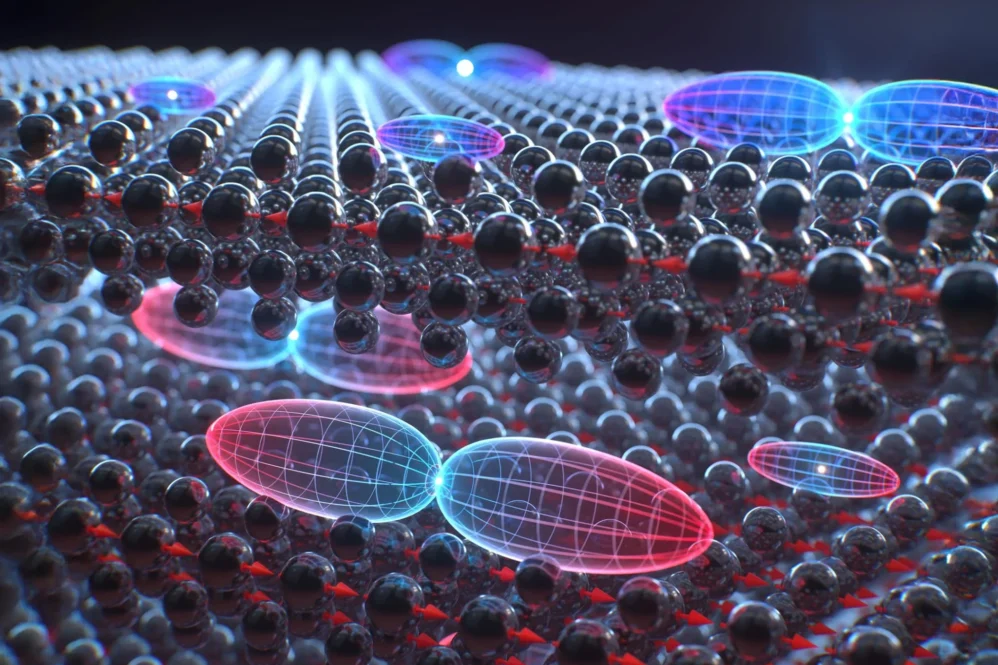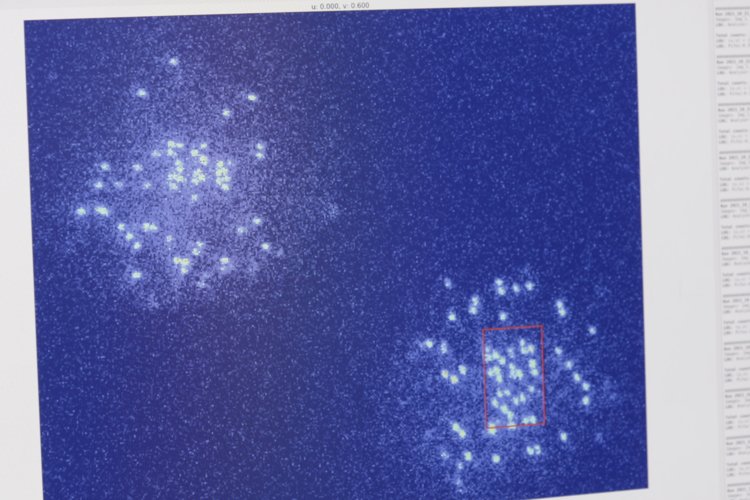Researchers from the University of Regensburg and the University of Michigan have discovered that chromium sulfide bromide may serve as a quantum “miracle material” enabling magnetic switching that could advance quantum computing and sensing technologies.
This remarkable material can encode quantum information in multiple ways: through electric charge, photons (light), electron spins (magnetism), and phonons (vibrations). What makes it particularly valuable is how its magnetic properties can confine quantum particles called excitons.
Excitons—formed when an electron moves to a higher energy state leaving behind a “hole”—can carry quantum information. In chromium sulfide bromide, these excitons become trapped in single atomic layers due to the material’s unique magnetic structure. Below 132 Kelvin (-222°F), the material becomes magnetized in an antiferromagnetic pattern where magnetic fields alternate direction between layers.
The confinement of excitons to single atomic layers and even to single lines (one-dimensional movement) significantly extends the longevity of quantum information by reducing collisions that would otherwise cause information loss. Professor Rupert Huber from the University of Regensburg describes this magnetic ordering as “a new tuning knob for shaping excitons and their interactions.“
In their experiments, researchers produced excitons by hitting chromium sulfide bromide with ultrashort infrared light pulses. They discovered two variations of excitons with unexpectedly different energies—a phenomenon known as fine structure. They also found that exciton configurations could be adjusted through magnetic states, which can be switched via external magnetic fields or temperature changes.
Perhaps most intriguingly, the material could potentially convert between different forms of quantum information. As Matthias Florian, research investigator at the University of Michigan, explains, “switching between a magnetized and a nonmagnetized state could serve as an extremely fast way to convert photon and spin-based quantum information.“
The research team is now investigating whether excitons embodied in charge separation can be converted to magnetic excitations in electron spins. This conversion could provide a valuable pathway between the different domains of quantum information carriers: photons, excitons, and spins—potentially revolutionizing how quantum information is processed and stored.
Reference: “Controlling Coulomb correlations and fine structure of quasi-one-dimensional excitons by magnetic order” by M. Liebich, M. Florian, N. Nilforoushan, F. Mooshammer, A. D. Koulouklidis, L. Wittmann, K. Mosina, Z. Sofer, F. Dirnberger, M. Kira and R. Huber, 19 February 2025, Nature Materials. DOI: 10.1038/s41563-025-02120-1



